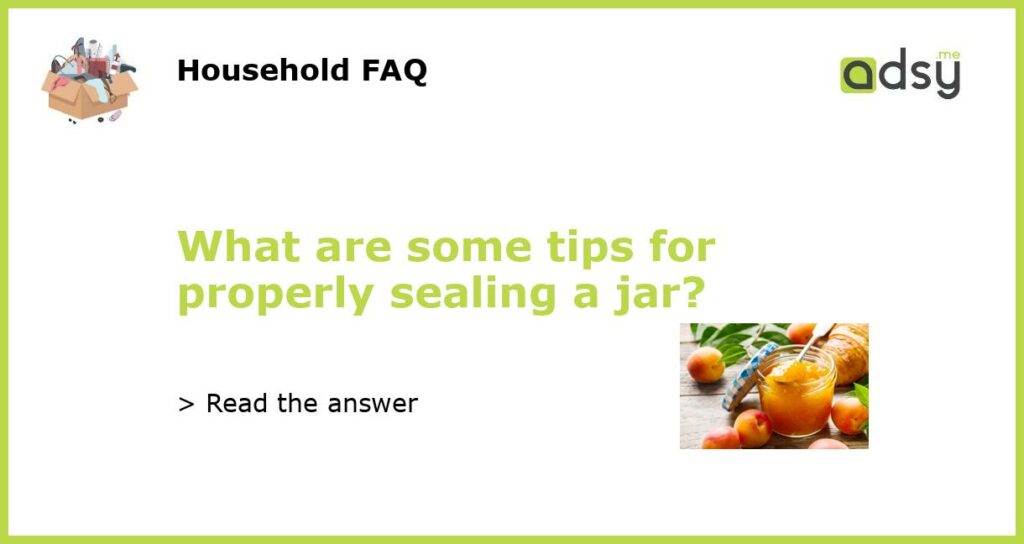Properly sealing a jar: 5 tips for success
Sealing a jar properly is essential to maintaining the freshness and quality of its contents. Whether you are canning fruits and vegetables or simply trying to keep homemade jam or pickles fresh, following these five tips will ensure your jars are properly sealed and the contents are safe for consumption.
Choose the right jar and lid
When it comes to sealing a jar, the type of jar and lid you use is crucial. Make sure you choose jars that are specifically designed for canning or preserving food. These jars are typically made of glass, have airtight lids, and come in a variety of sizes. Additionally, select lids that are specifically designed for the type of jar you are using, whether it be regular mouth or wide mouth. This will ensure that the lid fits securely and tightly on the jar, creating an airtight seal.
Clean and sterilize the jars
Before sealing your jars, it is important to clean and sterilize them to prevent any bacteria or contaminants from compromising the seal. Start by thoroughly washing the jars, lids, and rings in hot, soapy water. Rinse them well and then place them in a large pot filled with water. Bring the water to a boil and let the jars boil for 10 minutes to sterilize them. Remove the jars from the pot and let them air dry on a clean towel before filling them with your desired contents.
Use the proper jar filling method
The way you fill the jars can also affect the sealing process. To ensure a proper seal, it is important to leave the appropriate amount of headspace in the jar. Headspace refers to the distance between the top of the contents and the rim of the jar. Different types of food require different amounts of headspace, so be sure to follow a reliable recipe or canning guide for specific instructions. Additionally, when filling the jars, use a funnel to avoid spills and wipe the rims of the jars with a clean, damp cloth to remove any food particles that may interfere with the seal.
Apply the sealing method correctly
The method you use to seal your jars will depend on the type of jar and lid you are using. For jars with two-piece lids, such as canning jars, the sealing process involves tightening the ring around the lid and then processing the jars in a water bath or pressure canner. Follow the instructions provided with your jars and lids for the specific processing times and methods. For jars with one-piece lids, such as those used for homemade preserves or pickles, the sealing process is as simple as placing the lid on the filled jar and screwing the band on tightly.
Test the seal and store properly
After processing and cooling your jars, it is important to test the seal to ensure it has been properly sealed. Press down on the center of the lid to check for any movement or give. If the lid pops back up or makes a popping sound, it is not properly sealed. In this case, you can either reprocess the jar following the proper sealing method or refrigerate and consume the contents within a few days. If the lid remains firmly in place and doesn’t move, then the jar has been properly sealed. Store the sealed jars in a cool, dark place, away from direct sunlight and extreme temperatures, to further preserve the quality and freshness of the contents.






